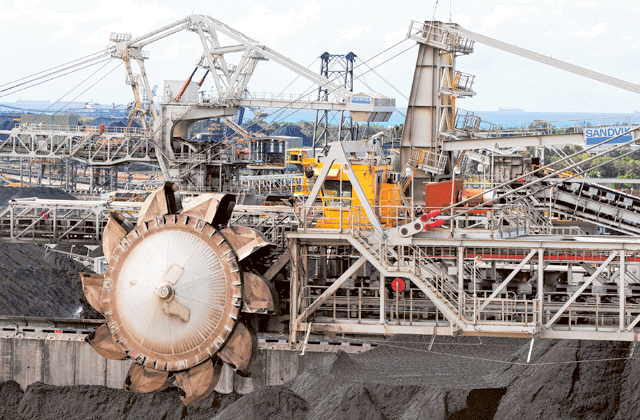
Sydney: Australia’s resource-rich state of Queensland hiked taxes on coal miners on Tuesday, aiming to raise up to A$1.6 billion (Dh6.09 billion or $1.66 billion) in extra revenue, just a day after miners announced cutbacks to deal with falling prices and rising costs.
Top global miners BHP Billiton and Xstrata Plc said on Monday they were cutting output and shedding about 900 jobs at high-cost mines, the latest in a series of cutbacks and investment delays sparked by slowing growth in top consumer China.
The hike in royalty rates drew a predictable response from the mining industry.
“The worse-than-feared hike in coal royalties announced in Tuesday’s Queensland budget means more job losses, the risk of further mine closures and the near certainty that numerous major new coal projects will not see the light of day,” said Michael Roche, chief executive of Queensland Resources Council, an industry body representing the mining firms.
The tax hike will likely make planned developments in Queensland’s remote Galilee Basin, a so-far untapped reserve, less viable in the short-term, as well as threaten higher cost producers.
Slowing economies
Prices for coal, Australia’s second biggest earner, have been sliding amid slowing economies across Asia, although miners are still betting heavily on rising demand from the likes of China and India over the longer term.
Queensland’s Liberal National Party (LNP) government will increase the rate on coal royalties to 12.5 percent for prices between A$100 and A$150 per tonne and to 15 per cent for anything higher. That was estimated to raise A$1.6 billion over four years. The current rate is 10 per cent on prices above A$100 a tonne.
The state government said it would then give the industry certainty by guaranteeing no change to royalty rates for the following 10 years.
Shock, surprise, disappointment
Rio Tinto said it was “shocked, surprised and very disappointed” by the size of the royalty increase.
The “decision to increase royalties in this way flies in the face of the efforts being made by mining companies to improve the competitiveness of their operations by reducing costs”, said Rio, which employs 2,400 in its Queensland coal operations.
BHP, which is reviewing its coal operations in the state in light of soaring costs, weak prices and a strong Australian dollar, said the state already had one of the world’s highest royalty regimes.
“We made it clear to the Queensland Government that in the current environment any additional taxation impost will directly impact the profitability of our current operations and will affect business decisions on capital growth allocations in the State,” BHP said.
Benchmark Australian thermal coal prices are trading just below $92 a tonne while metallurgical coal, set by opaque quarterly contracts, is around $200 per tonne. Thermal coal is burned for power generation, while metallurgical, or coking coal, is used in steel making.
A significant portion of the Australian thermal and coking coal industry is losing money at current prices,” said Xstrata in a statement.
“There is a risk that the increase in royalties could result in production cutbacks in marginal operations. As a consequence, estimates of how much additional royalty revenue will be raised may be optimistic.”
Who will pay?
It is not clear who will end up paying for the rise in royalty rates, since the Federal Labor government has pledged to reimburse the major miners for any hike in state royalties under its Minerals Resource Rent Tax (MRRT).
In retaliation, Treasurer Wayne Swan has threatened to claw back the money from Queensland by cutting federal grants for infrastructure investment in the state.
The Labor government had been counting on its mining tax raising A$13 billion over its first four years, but that looks ambitious now given spot iron ore prices are down 30 per cent since early July.
Queensland’s A$293 billion economy continues to pay the price of devastating floods in 2010/11, but is also suffering from weak property tax revenues and a slide in tourism due to the strong Australian dollar.
In a belt-tightening first budget, the state government announced about 14,000 public sector job losses in an effort to save A$3.7 billion and return to surplus by 2013/14, a year earlier than previously projected.
The need for fiscal rigour was highlighted earlier on Tuesday, when Moody’s cut the credit rating on the state of South Australia, blaming persistent deficits and mounting debt.
The one-notch downgrade left South Australia level with Queensland at Aa1, though that is still the second-highest rating Moody’s can give a borrower.
Seeking to regain the coveted triple-A status, Queensland’s government aims to stabilise the state’s debt around A$83 billion by 2015/16.












